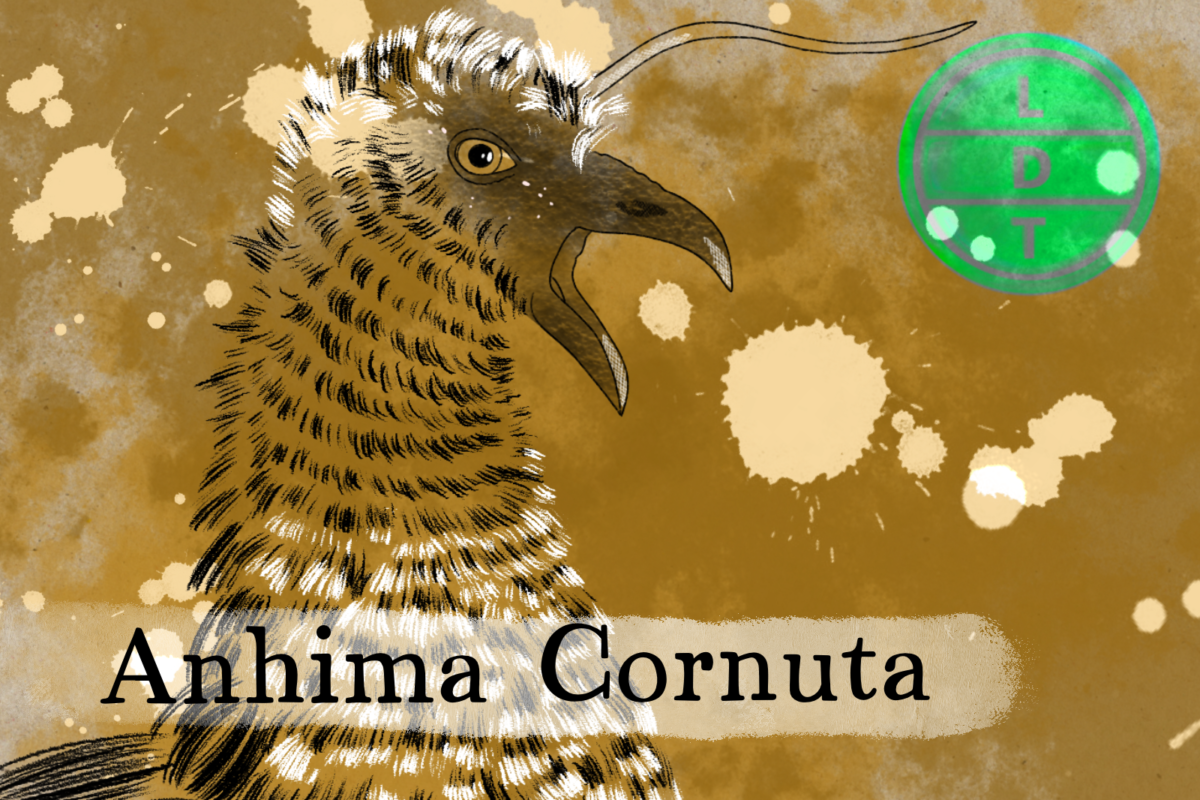“…and today we’re talking about a bird that would make a terrible nickname. But more on that later.”
In the valley of the dry bones, God showed Ezekiel his power over life and death by breathing life into the long desiccated skeletons that lay there in the valley. But for birds, breathing life into your bones has a different connotation. The horned screamer has an extremely unique skeletal structure, even for a bird. But, to fly, you need to use every system you have available here in Life, Death, and Taxonomy.
Description of the Horned Screamer
- The horned screamer is a general ground-fowl shape with a chicken beak and stocky pheasant body.
- They have black feathers with white bespeckled necks and breasts with white on their underside and legs.
- They also have orange eyes.
- As their name suggests, they have a horn (sort of)
- Many birds have feather crests on the tops of their heads, but this horn isn’t made of feathers.
- It’s actually attached to the skull.
Measure Up
Welcome to the beloved Measure Up segment. The official listener’s favorite part of the show! The part of the show when we present the animal’s size and dimension in relatable terms through a quiz that’s fun for the whole family. It’s also the part of the show that’s introduced by you when you send in audio of yourself saying, singing, or chittering the words Measure Up into ldtaxonomy at gmail dot com. We don’t have a new Measure Up intro! https://www.youtube.com/watch?v=4FZKMvHE8fI
Length
- 84–95 cm (33–37.5 in) long
- How many horned screamers go into the length of a set of the largest Asian water buffalo horns point to point?
- Hint: The largest Asian water buffalo (horn-wise) was measured in 1955. Asian water buffalo are native to India, Nepal, Bhutan, and Thailand.
- 4.4 screamers. The largest horns point to point were 4.24 m (13 feet, 10 inches).
Weight
- 3.5 kg (7.7 lb)
- How many screamers go into the weight of the largest scoop of ice cream?
- Hint: The ice cream was scooped in Cedarburg, WI in 2014. It was strawberry flavored and actually had the Kemps cottage cheese company brand carved into it.
- 391 screamers scream for ice cream. The largest scoop was 3,010 lb (1,365.3 kg)
Fast Facts about the Horned Screamer
The horned screamer can be found in Colombia, Venezuela, Brazil, Bolivia, Peru, Ecuador, French Guiana, Suriname, and Guyana. They prefer marshes with abundant vegetation and water plants.
Screamers are so named because they make a loud call like we heard earlier. In Ecuador it’s called “el clon-clon” because the repetition sounds like an echo.
They nest in shallow water. They anchor floating vegetation in the shallows to create a water bead. They lay around three eggs at a time.
They aren’t extremely active and live life surrounded by their primary food source, which are water plants.
Major Fact: Dem Bones
Most people are aware that birds have hollow bones. Do you know why?
Galileo described bird bones as hollow and lightweight in 1638. So everyone has figured that birds have hollow, brittle bones.
A bat researcher named Elizabeth Dumont from the University of Massachusets Amherst. It turns out that bird bones are heavier than those of other animals based on body weight.
The skeleton of a 2 oz bird is heavier than that of a 2 oz mouse. Turns out that bird bones are actually denser than other animal bones on average (density being how much mass is in the same volume of bone. So bird bones are smaller and thinner, but they’re actually just as strong if not stronger.
Bird bones aren’t exactly hollow, it’s not like their bones are open tubes – that wouldn’t be great for keeping your bones from breaking a lot.
Their bones are more honeycombed with large air pockets with walls running throughout. These are called pneumatized bones. According to the Montana Natural History Center, the air sacs in their bones might even help with oxygen intake and allow air to flow throughout the body more easily.
One bird breath goes further and does more work than a mammal breath, according to the royal society for the protection of birds.
Their respiratory system even extends to their bones by adding more oxygen to the blood and helping them have more energy for flight.
It actually turns out that bird bones being hollow do help them fly, but not because they’re light, but because they’re like secondary lungs.
And not all their bones are “hollow”. Large soaring birds like eagles and vultures have more hollow bones than birds that dive. Usually the largest bones are hollow and smaller outer bones are solid.
Penguins, loons, and puffins actually don’t have any hollow bones. Not having a bunch of air trapped in your bones makes it easier to dive underwater – go figure. Emus and ostriches have hollow femurs, but obviously that doesn’t help them fly. It may help them regulate heat.
Horned screamers actually lack special rib prongs that almost every other bird in the world has. They have the most pneumatic bones out of any animal. Even their outer bones are hollow and filled with air pockets. Even their skin is filled with tiny air sacs. So the horned screamer makes a distinct crackling sound when it moves.
Ending: So scream your heart out, keep your cartilaginous proboscis thingies to yourself, and always remember to breathe through your bones like most birds but the horned screamer in particular.

